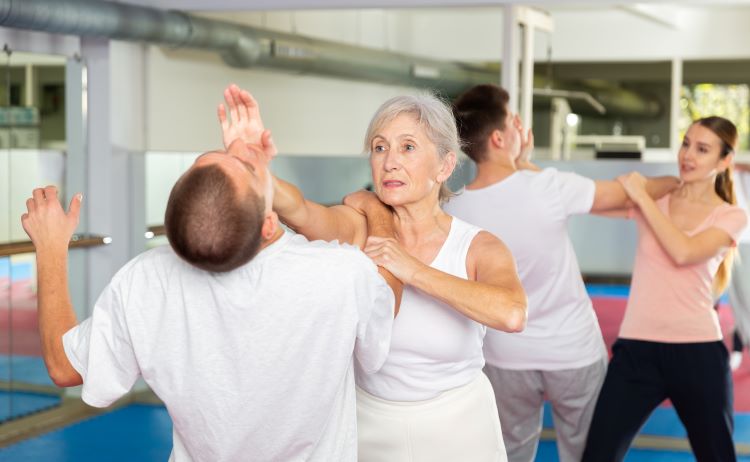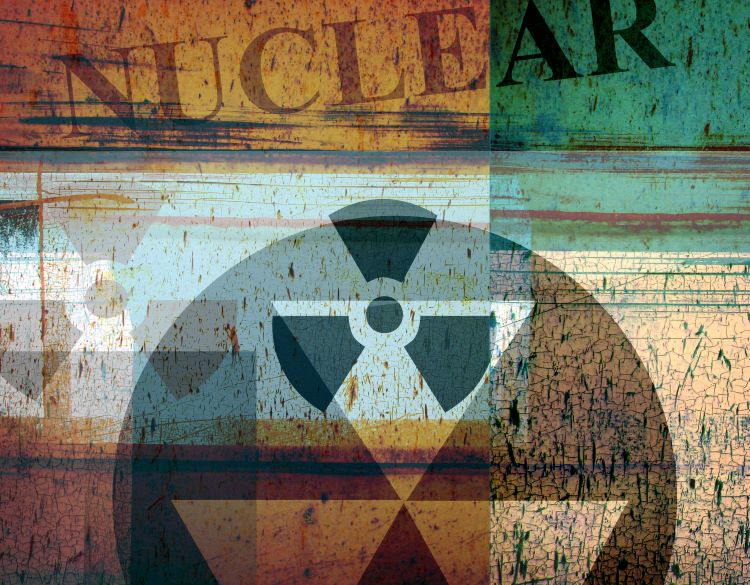Emergency Preparedness for Seniors
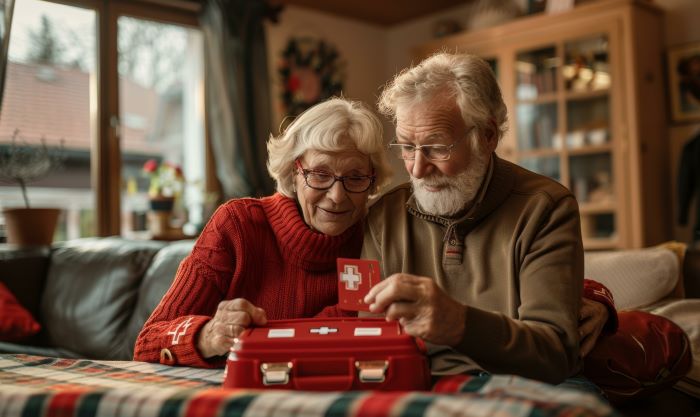
Introduction to Emergency Preparedness for Seniors
As I age, I appreciate the peace of mind from being prepared for unexpected events. Knowing that I have a head start on a survival plan (it always needs updating!) gives me the warm fuzzies. This is especially true for those of us in our senior years when an emergency can present unique challenges.
Having a plan that addresses these challenges is crucial. Emergencies can range from natural disasters to power outages, and proper preparation can make all the difference.
What does emergency preparedness for seniors entail? It’s about understanding the adjustments needed for our age group. For instance, mobility concerns, health conditions, and medication requirements must be considered when preparing for emergencies. It’s not just about having supplies; it’s about having a practical strategy tailored to our needs.
Why focus on us seniors? Statistically, we are often more vulnerable during disasters due to factors like chronic health conditions or accessibility issues. Therefore, emergency plans must consider our needs to ensure our safety and well-being.
Assessing and Managing Risks for Seniors
Creating a rock-solid emergency plan for seniors starts with identifying the potential hazards they might face. This varies from individual to individual, but common risks include falls, power outages, natural disasters, and health crises. It’s my job to ensure I’m aware of the unique challenges and needs of the older adults in my care.
A solid emergency plan isn’t just my responsibility. It involves building a personal support network of family, friends, neighbors, and caregivers who can offer assistance in times of need. I often encourage seniors to foster relationships with those who can be there for them swiftly—particularly important for those with mobility or health issues.
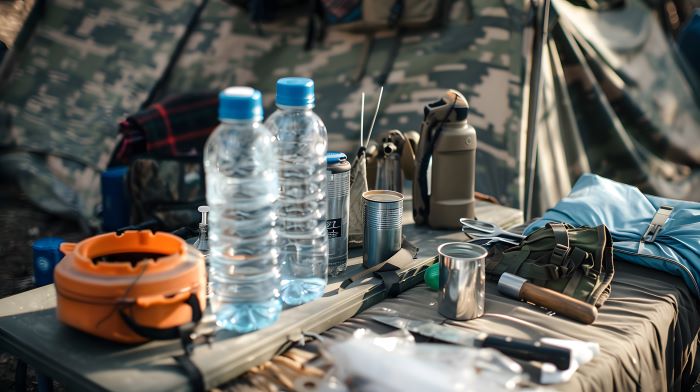
Making a home safer is a crucial step. I guide seniors through a home safety assessment, identify tripping hazards, ensure smoke detectors and carbon monoxide alarms work, and install grab bars in necessary areas. Additionally, I recommend adapting living spaces, such as organizing an easy-to-navigate layout and securing loose items that could shift during an emergency.
Building a Customized Emergency Kit
You might overlook the uniqueness each individual brings to the table when preparing for disasters. A well-thought-out emergency kit can mean the difference between safety and distress for seniors. Here are practical steps seniors or our caregivers can take to assemble an effective kit.
Start with the basics. Non-perishable food, water for several days, and a flashlight with extra batteries are key. But don’t stop there. Seniors should consider their daily needs. Medications, hearing aids with extra batteries, glasses, and copies of medical records are crucial.
Infuse the kit with personal details. If you have specific medical devices, include spare parts and instructions. Add a list of doctors and emergency contacts, and consider adding lightweight clothing and sturdy shoes.
This kit requires regular maintenance. It should be checked and updated every six months. Expiring items should be replaced, medical information updated, and electronics ensured to be in working order.
Our kit is our lifeline in an emergency. I will make it count by tailoring it to my exact needs. I will keep it in a designated place and ensure its accessibility. Now that we have our emergency kit set let’s discuss our exit strategy for a crisis.
Developing an Efficient Evacuation Plan
Knowing WHEN and HOW to leave home is crucial for seniors when an emergency strikes. An evacuation plan considering mobility issues and medical needs can make a difference. I want to help you create a strategy that works specifically for you.
Assess your transportation options. If you don’t drive, identify public transportation or services for seniors during evacuations. Ensure these are accessible and confirm their availability with local agencies in an emergency.
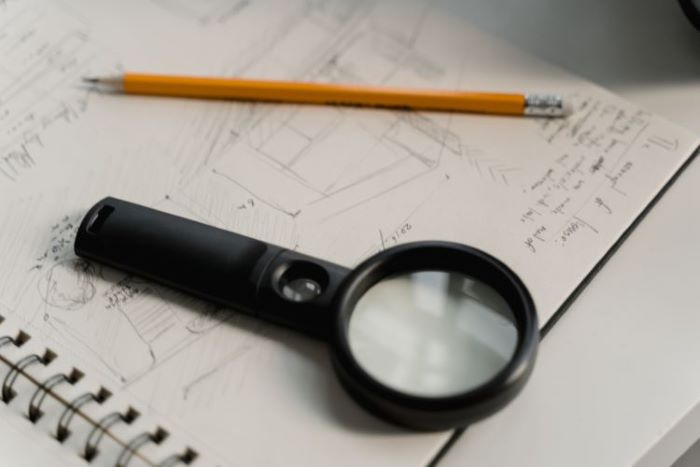
Involve family, friends, and caregivers in your plan. Make sure they’re aware of your conditions and the role they might play if an evacuation becomes necessary. Also, check if your local government maintains a registry for seniors needing special assistance.
Work with your support network to establish meeting places, both nearby and further away, in case of area-wide emergencies. Agree on multiple routes to these locations, and remember that the most direct route might not always be available.
Consider any medical treatments you regularly undergo. If you receive treatments at a clinic or have scheduled appointments, learn their protocols for emergencies and how you can continue them or temporarily bypass them safely.
PRACTICE your plan. Regular drills will help you remember the steps during an emergency and can pinpoint any issues in the plan that need adjustments.
Communication Strategies During Emergencies
A solid communication plan is a cornerstone of emergency preparedness, especially for seniors. Having alternative strategies is crucial when usual communication methods might be disrupted.
Setting up reliable communication channels before an emergency occurs ensures you can receive aid and contact loved ones. Invest in a battery-operated radio and consider a landline telephone if you rely on a mobile phone, as cell towers may be overwhelmed or damaged during a disaster.
Stay informed about impending emergencies through local news and alert systems. Many communities offer systems that send warnings via phone calls, texts, or emails. Ensure you’re signed up for these services, and your devices are charged and ready.
Establishing a protocol for contacting family and emergency contacts is vital. Create a list of key phone numbers and keep it in a readily accessible place. Decide on a family emergency meeting spot and ensure everyone knows the plan.
Emotional and Mental Health Considerations
Seniors’ emotional and mental well-being is as crucial as physical safety in emergencies. Emergencies can be incredibly stressful, particularly for seniors who might feel vulnerable. It’s important to acknowledge and plan for this aspect of emergency preparedness.
Before an emergency, seniors should establish a support system that includes family, friends, and perhaps professionals familiar with their emotional needs. This network can provide comfort and assistance, ensuring seniors have someone to reach out to during challenging times.
We seniors should be familiar with coping strategies that can help manage stress and anxiety during an emergency. Techniques such as deep breathing, staying connected with loved ones, and maintaining a routine can offer a sense of control and normalcy.

Access to mental health resources is also vital. Seniors and caregivers should be aware of local mental health services, including hotlines and counseling options available before, during, and after an emergency.
Taking proactive steps to ensure emotional and mental health support can greatly assist us seniors in navigating the uncertainties of emergencies with resilience and stability.
Q&A Session
What special factors should seniors consider in an emergency?
- Medical Needs:
- Medications: Ensure a sufficient supply of medications and copies of prescriptions.
- Medical Equipment: Ensure batteries for medical devices like hearing aids, oxygen supplies, and mobility aids are available.
- Health Information: Keep a list of medical conditions, allergies, and emergency contacts readily accessible.
- Mobility and Accessibility:
- Evacuation Plans: Consider how mobility aids (wheelchairs, walkers) will be transported.
- Accessibility: Identify accessible shelters and emergency facilities.
- Communication:
- Assistive Devices: Ensure devices for hearing or vision impairments are ready.
- Contact Plan: Develop a plan for communicating with family and emergency services, including a list of important phone numbers.
- Support Network:
- Neighbors and Friends: Inform them of your emergency plan.
- Caregiver Coordination: Coordinate with caregivers about their roles during an emergency.
- Living Situation:
- Assisted Living Facilities: Know the facility’s emergency plans and evacuation procedures.
- Home Safety: Secure the home to prevent falls and ensure a clear path for evacuation.
How often should seniors update their emergency plans and kits?
- Emergency Plans:
- Annually: Review and update the plan at least once a year.
- After Major Life Changes: Update the plan after significant changes in health, medication, living situation, or contact information.
- Emergency Kits:
- Biannually: Check and refresh the emergency kit every six months.
- Medication: Replace medications and medical supplies as needed, ensuring they are within their expiration dates.
- Seasonal Adjustments: Adjust the kit for seasonal needs, such as adding extra blankets in winter.
What role do caregivers play in emergency preparedness for seniors?
- Planning and Coordination:
- Developing Plans: Help develop and review emergency plans with seniors, ensuring all needs are considered.
- Coordination: Coordinate efforts with family members, medical professionals, and emergency services.
- Preparation:
- Emergency Kits: Assist in assembling and maintaining emergency kits.
- Training: Ensure seniors know how to use emergency equipment and supplies.
- During an Emergency:
- Support: Provide physical and emotional support, ensuring seniors understand the situation and what steps must be taken.
- Evacuation Assistance: Help with evacuation, ensuring all necessary items are brought along, and the senior is safe and comfortable.
- Post-Emergency:
- Assessment: Help assess the senior’s condition and needs following the emergency.
- Recovery: Assist in the recovery process, including dealing with insurance, repairs, and restoring normalcy.
Caregivers play a crucial role in ensuring that seniors are well-prepared for emergencies and can respond effectively, maintaining their safety and well-being.
People Also Ask
Should seniors have different emergency plans for other types of emergencies?
Yes, seniors should have different emergency plans for different types of emergencies. Each type of emergency (e.g., natural disasters, medical emergencies, fires) requires specific preparations and responses:
- Natural Disasters (e.g., earthquakes, floods, hurricanes):
- Evacuation Routes: Know the safest routes and destinations.
- Shelter-in-Place: Prepare the home with necessary supplies if evacuation isn’t possible.
- Weather-Specific Preparations: For example, securing heavy objects for earthquakes or preparing sandbags for floods.
- Medical Emergencies:
- Immediate Medical Assistance: Know how to quickly access medical help (e.g., emergency numbers, nearest hospitals).
- Medical Information: Keep detailed medical records and emergency contact information easily accessible.
- Fires:
- Escape Plan: Have a clear, practiced escape route from the home.
- Fire Safety Devices: Ensure working smoke detectors and fire extinguishers are in place.
- Power Outages:
- Backup Power: Consider having backup power sources for critical medical equipment.
- Light and Heat: Have battery-powered lights and extra blankets.
By having specific plans for different scenarios, seniors can ensure they are adequately prepared and respond effectively to various emergencies.
How can seniors ensure their pets are taken care of during an emergency?
- Pet Emergency Kit:
- Supplies: Include food, water, bowls, a leash, medications, and a pet first-aid kit.
- Identification: Ensure pets have ID tags and, if possible, microchips.
- Evacuation Plan:
- Pet-Friendly Shelters: Identify shelters or hotels that accept pets.
- Transport: Have carriers or cages ready for safe transport.
- Documentation:
- Medical Records: Keep a copy of vaccination and medical records in the emergency kit.
- Ownership Proof: Have photos and documents proving ownership.
- Caregiver Coordination:
- Backup Caregiver: Arrange for a neighbor or friend to take care of pets if you cannot.
- Communication: Inform caregivers of your plans and the pet’s needs.
- Medications:
- Supply: At least a week’s supply of all prescription medications.
- List: All medications, including dosages and prescribing doctor’s information.
- Medical Supplies:
- Medical Devices: Extra batteries for hearing aids, blood glucose meters, oxygen, and other essential medical devices.
- First-Aid Kit: Bandages, antiseptics, pain relievers, and other basic medical supplies.
- Health Information:
- Medical Records: Copies of medical records, including conditions, allergies, and surgeries.
- Contact Information: Emergency contact numbers for doctors, pharmacies, and family members.
- Personal Hygiene Items:
- Sanitizers: Hand sanitizers and sanitizing wipes.
- Personal Care: Toothbrush, toothpaste, and other personal care items.
- Assistive Devices:
- Mobility Aids: Extra cane, walker, or wheelchair, if needed.
- Vision/Hearing: Extra glasses or hearing aids with batteries.
By including these critical health-related items, seniors can better manage their health during emergencies and maintain comfort and safety.
Do you have a plan for seniors in emergencies? Do you have any supplies in a bug-out bag or containers you use for disasters? Do you have any mobility issues or chronic illnesses that can inhibit your preparedness processes? Please leave us your comments below so we can all learn from each other.

